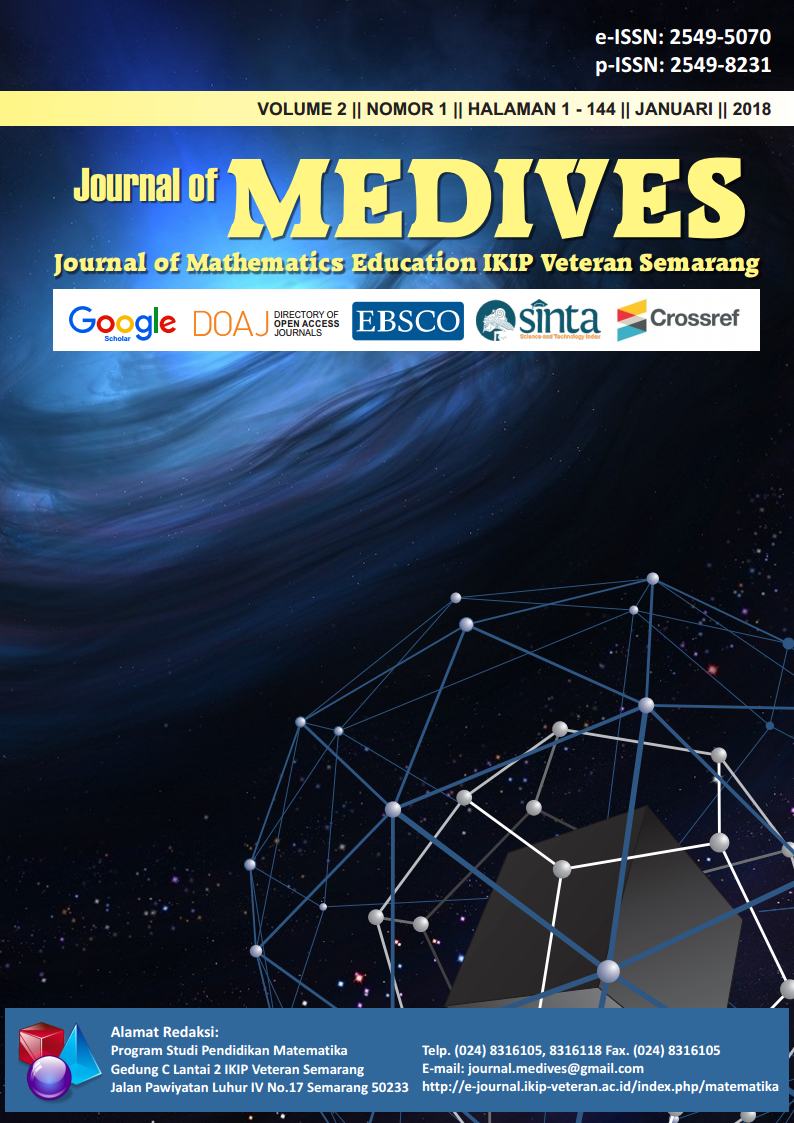Matematika Nusantara: Pengajaran Matematika Berbasis Budaya Indonesia
Abstract
Berbagai model pengajaran masuk ke Indonesia dengan berbagai karakteristik yang belum tentu cocok dengan kondisi Indonesia. Ketidakcocokan tersebut dapat ditinjau dari berbagai faktor, mulai dari latar belakang siswa, budaya, kondisi geografis, guru, kurikulum dan sebagainya ketika dibandingkan dengan negara asalnya, yakni Belanda dengan Realistic Mathematics Education (RME) dan Amerika untuk Contextual Teaching and Laerning (CTL). Indonesia dengan segala keberagamannya termasuk kekayaan budayanya merupkan potensi yang tak ternilai untuk dieksplorasi menjadi sumber pengajaran matematika dengan penciri yang khas. Artikel ini memberikan gambaran awal dalam menciptakan suatu model pembelajaran matematika berbasis budaya yang ada di nusantara dengan nama Matematika Nusantara. Uji coba model ini telah dilaksanakan pada pelatihan untuk guru-guru matematika di kabupaten Serang-Banten. Respon yang positif dan optimis dari peserta menjadikan model Matematika Nusantara mantap dapat diimplementasikan di Indonesia dengan fleksibilitas yang tinggi sesuai dengan karakteristik budaya di masing-masing daerah.
Kata kunci: matematika nusantara; matematika berbasis budaya
ABSTRACT
Various learning models came to Indonesia with various characteristics that may not necessarily match with the conditions of Indonesia. That incompatibility can be observed from many factors, such as student background, culture, geographical conditions, teachers, curriculum, and so on, when they are compared to their origin country, Netherlands for the Realistic Mathematics Education (RME) and America for the Contextual Teaching and Learning (CTL). Indonesia with all its cultural diversity is the most valuable potential to be explored as an unique mathematical learning material. This article provides the first description in creating an Indonesian cultural-based mathematics learning model named Matematika Nusantara. This model has been tested and implemented in mathematics teacher training in Kabupaten Serang, Banten. The positive and optimistic response from the participants shows that Matematika Nusantara model can be steady implemented in Indonesia with high flexibility for any curtural characteristics in each region.
Keywords: matematika nusantara, curtural-based mathematics
Downloads
References
Depdiknas. (2006). Kurikulum Tingkat Satuan Pendidikan (KTSP). Jakarta: Depdiknas.
Jary, D. and J. Jary. (1991). The HarperCollins Dictionary of Sociology. New York: HarperCollins. ISBN 0-06-271543-7.
Khisti, L. L. (1997). Making Mathematics Accessible to Latino Students: Rethinking Instructional Prantice. In. Kenney & J. Trentacosta (Eds.). Multicultural and Gender Equity in The Mathematics Classroom: The Gift of Diversity (pp. 92-101). Reston, VA: National Council of Teacher of Mathematics.
Kroeber, A. L., & Kluckhohn, C. (1952). Culture: A Critical Review of Concepts and Definitions. Papers. Peabody Museum of Archaeology & Ethnology, Harvard University.
OECD (2006b), Personalising Education, (Schooling for Tomorrow series), Paris.
Rice, M. L. & Wilson, E. K. (1999). Says 1998 in text on pg. 19/20 How Technology Aids Constructivism in the Social Studies Classroom. Social Studies. 90(1), 28-33.
Sawyer, R.K. (in press), “Optimising Learning: Implications of Learning Sciences Research” in Emerging Models of Learning and Innovation (provisional title), OECD.
Turmudi. (2008). Landasan Filsafat dan Teori Pembelajaran Matematika (Berparadigma Eksploratif dan Investigatif). Jakarta: Leuser Cipta Pustaka.
nn. What are 21st century skills? Diakses di https://k12.thoughtfullearning.com/FAQ/what-are-21st-century-skills.

This work is licensed under a Creative Commons Attribution 4.0 International License.
The copyright for all articles belongs to the authors. All other copyright is held by the journal.






